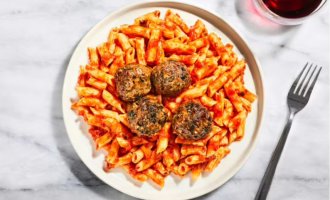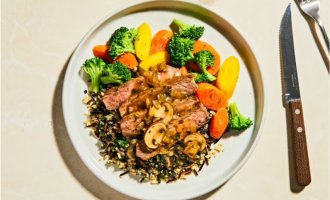The more recent darling of non-dairy milks? Oat milk. It’s been popping up in lattes and grocery stores everywhere we look.
But it’s just the latest in a long line of milk alternatives that have swept health nuts off their feet and filled their fridges—beginning almost a decade ago with the OG, almond milk.
It used to be, milk alternatives such as soy and rice were considered specialty foods. Now, more than a third of American homes consume them–for a variety of reasons. Whether because of dietary restrictions, sustainability concerns, or simply taste preference, these “milks” have gone mainstream.
But with dizzying array of alternatives—from cashews, to peas, and even bananas—choosing the right milk for you is more confusing than ever. And are they necessarily healthier for you?
Emily Navarro, RDN, senior manager of health and wellness for Freshly, clears up some of the main misconceptions so you can milk the most health out of your next latte.
They don’t necessarily lack calcium and vitamin D
You don’t need to rely on traditional milk to get your fill—but the amount of calcium and vitamin D in plant based milks can vary drastically. Most are fortified, however it’s with the synthetic versions of these nutrients, which may not be as easily absorbed.
So aim to get them from food first: seek out calcium from plant sources like leafy greens, broccoli, almonds, chia seeds, and beans, and get vitamin D from fatty fish like salmon, or plant foods like seeds and walnuts.
They may contain more sugar
If that nut milk tastes sweet…there’s a good chance there’s some added sugar in it: Opt for the unsweetened versions and scan the label to find versions with 0g of added sugar. If added sugars are not listed on the label, look at the ingredients list to spot sweeteners like cane sugar or syrup.
They have varying degrees of protein
Soy milk and pea milk provide 7-8g per serving, which are highest in protein of all non-fortified plant milks. Oat milk and hemp milk come in second with about half as much protein. Non-dairy milks made from nuts, rice, or coconut do not provide much protein (0-2g per serving). So take this into consideration when accounting for your daily protein intake.
And calories!
Another reason to read the label of your favorite plant-based milk: some varieties like soy, rice, and oat are higher in calories and carbs. Switching to a nut or coconut-based milk (like the one used in our Thai Coconut Curry dish can be an easy way to slash calories and carbs, with just 25-60 calories and 1-2g carbs per serving.
They may contain more preservatives
To boost creaminess and improve stability, non-dairy milks may have added ingredients like emulsifiers and preservatives. Vegetable oils like sunflower, or soy are sometimes used as thickeners, these oils are sources of omega-6 fatty acids, which most people need less of since, in excess amounts, can contribute to inflammation. To play it safe, opt for versions with the fewest ingredients possible.
They are interchangeable when cooking
When it comes to using milk alternatives beyond your morning bowl of cereal, it’s important to take the type into account: Varieties with a higher protein content, like soy, oat, or pea milks, tend to work better in place of cow’s milk for baking.
Nut-based milks work well in smoothies or stirred into coffee. For sauces, the creamier the better: coconut-based milks can be used alone or to dilute canned coconut milk to cut back on calories and fat in Thai-inspired sauces like curry.






